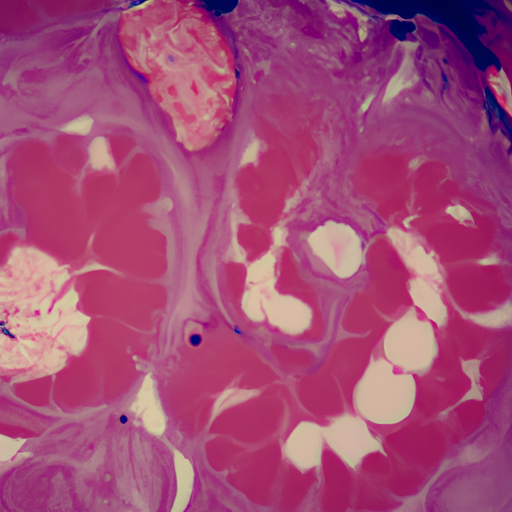
Cholecystitis is a condition that involves inflammation of the gallbladder. This condition can be caused by gallstones or other health problems. When the gallbladder becomes inflamed, it can lead to a range of symptoms that can be both uncomfortable and concerning. It’s important to recognize the symptoms of cholecystitis in order to seek proper medical treatment.
In this article, we will explore the symptoms of cholecystitis in detail, as well as provide insights into the potential causes and treatment options for this condition.
1. Abdominal Pain
One of the most common symptoms of cholecystitis is abdominal pain, particularly in the upper-right portion of the abdomen. This pain can be severe and may radiate to the back or right shoulder. It is often triggered by eating fatty or greasy foods, and can last for several hours. The pain may also worsen when taking deep breaths or moving.
If you experience persistent or severe abdominal pain, it is important to seek medical attention to determine if cholecystitis is the underlying cause.
2. Nausea and Vomiting
Another common symptom of cholecystitis is nausea and vomiting. The inflammation of the gallbladder can lead to digestive disturbances, causing a feeling of nausea and discomfort in the stomach. In some cases, this can progress to vomiting, particularly after consuming meals that are high in fat content.
If you experience persistent nausea and vomiting, along with other symptoms of cholecystitis, it is important to consult a healthcare professional for an accurate diagnosis and treatment plan.
3. Fever and Chills
Cholecystitis can also cause a low-grade fever and chills. This is the body’s response to inflammation and infection in the gallbladder. If you have a fever along with abdominal pain and other symptoms, it could be a sign of cholecystitis and should be evaluated by a medical professional.
Fever and chills can indicate a more serious infection in the gallbladder, so it is crucial to seek medical attention promptly if these symptoms persist.
4. Jaundice
In some cases, cholecystitis can lead to jaundice, a condition characterized by yellowing of the skin and eyes. This occurs when the inflammation of the gallbladder causes a blockage in the bile duct, leading to a buildup of bilirubin in the body. If you notice any signs of jaundice, it is important to seek immediate medical attention to address the underlying cause.
Jaundice can indicate a more severe form of cholecystitis and may require urgent medical intervention to prevent complications.
5. Changes in Bowel Movements
Cholecystitis can also cause changes in bowel movements. Some individuals may experience diarrhea, while others may have light-colored stools. These changes are a result of the disruption of the normal bile flow from the gallbladder, and can be a sign of underlying cholecystitis.
If you notice changes in your bowel movements that persist over time, it is important to seek medical evaluation to determine the cause and receive appropriate treatment.
6. Loss of Appetite
Loss of appetite is another potential symptom of cholecystitis. The discomfort and digestive disturbances caused by inflammation of the gallbladder can lead to a reduced desire to eat. This can result in unintentional weight loss and nutritional deficiencies if left untreated.
If you experience a persistent loss of appetite along with other symptoms of cholecystitis, it is important to consult with a healthcare professional for a proper assessment and treatment plan.
7. Shoulder Pain
Some individuals with cholecystitis may experience referred pain to the right shoulder. This is known as “referred pain” and occurs when the nerves from the gallbladder send signals to other areas of the body, such as the shoulder. The shoulder pain may be sharp and persistent, and often accompanies abdominal pain in individuals with cholecystitis.
If you experience unexplained shoulder pain along with other symptoms, it is important to seek medical evaluation to determine the underlying cause and receive appropriate treatment.
8. Bloating and Gas
Cholecystitis can also cause bloating and excessive gas. This occurs as a result of the digestive disturbances caused by inflammation of the gallbladder. The bloating and gas can lead to discomfort and abdominal distention, and may be worsened by consuming certain foods that are difficult to digest.
If you experience persistent bloating and gas along with other symptoms of cholecystitis, it is important to seek medical evaluation to determine the cause and receive appropriate treatment.
9. Indigestion
Indigestion, also known as dyspepsia, can be a common symptom of cholecystitis. Individuals with cholecystitis may experience discomfort in the upper abdomen, as well as symptoms such as belching, flatulence, and a feeling of fullness after eating. This can make it difficult to enjoy meals and may lead to further nutritional concerns.
If you experience persistent indigestion along with other symptoms of cholecystitis, it is important to consult with a healthcare professional for an accurate diagnosis and treatment plan.
10. Chest Pain
Sometimes, individuals with cholecystitis may experience chest pain, particularly if the inflammation of the gallbladder leads to referred pain in the chest area. This can be alarming and may be mistaken for a cardiac issue. It is important to seek medical evaluation to determine the underlying cause of chest pain and receive appropriate treatment.
If you experience unexplained chest pain along with other symptoms of cholecystitis, it is important to seek medical attention promptly to rule out any serious cardiac issues and address the root cause of your symptoms.












